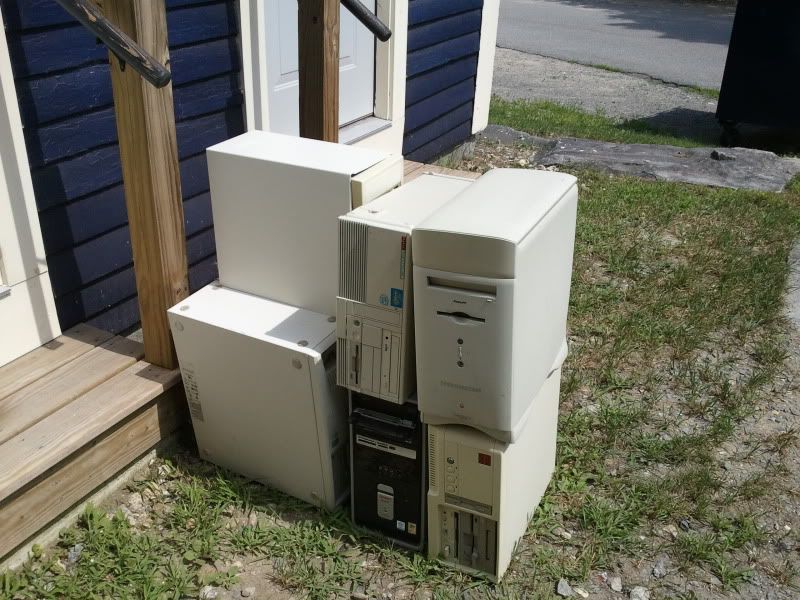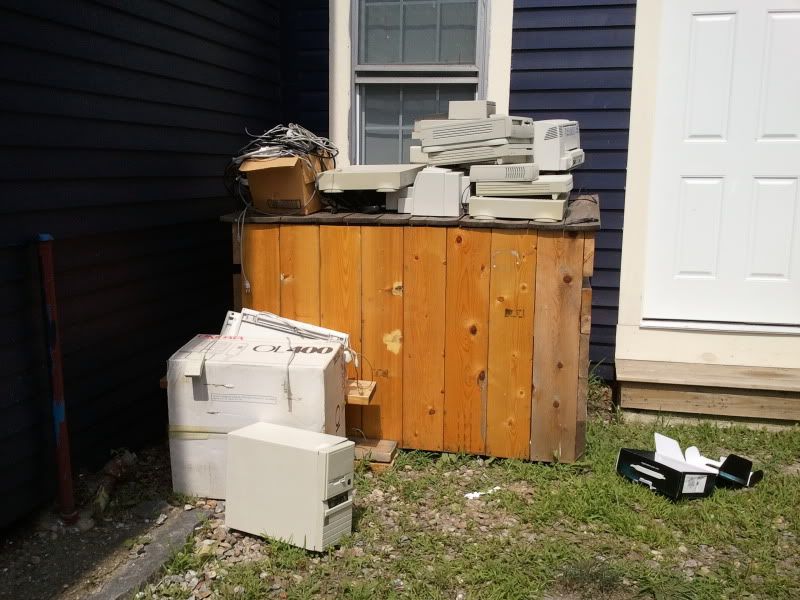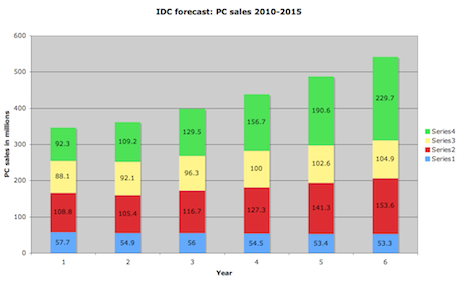Save anything 486 or older. If the system is working, remove the battery so it doesn't leak all over the place and moth ball it for 5 to 10 years when it will be worth hundreds of dollars, possibly over a grand if you have the space to save them. I'm not sure the monitor is worth the space it will take to save though, but have a few on hand for testing. Otherwise, save the mother boards and cards with ram and also the hard drive. If the system works, you can list it or individual parts on ebay as tested and working, they fetch more $$$ that way. Sometimes the parts are worth more individually then as a complete system. Hard drives under a gig are going for good money if tested. I've seen some of the old full height hard drives fetch hundreds of dollars, sometimes over a grand each depending upon rarity.
I save mother boards, most all the cards, ram and hard drives and sometimes a few hard to find monitors. Early Pentium processors with a lot of gold, group them in lots and they sell big under scrap gold cpu's on ebay. Ram as a lot sale sells well too. Some people cut the gold fins off and sell them for scrap. It takes time but might be worth it when times are hard.
I have sold monitors, motherboards, CPU's, hard drives, ram and most cards on ebay with success. Also wire wrap gold pins which have a lot of gold content. Rare cards I sell individually, but some I sell in lots just to get rid of them.
Most stuff you have to look as how much time you want to spend. I usually want twenty bucks or more for a listing, otherwise it's a waste of time. Get your items ready for the day. Take pictures one after the other. Some items need 4 sides, top, bottom and name plate or damage, otherwise one per item might do. Upload to photobucket and list one after the other like an assembly line. I do a bunch of motherboards at a time so it goes faster.
Empty cases don't sell unless very rare as well as power supplies and misc stuff. Also, sell with buy it now and include make offer. List for 30 days with auto renew. Start high, after doing your research by looking at past sales. Month after month, reduce your non selling items a little at a time and they will eventually sell. if you just need cash, sell auction style but never at .99 cents unless you want to make .99 cents an hour.
Include a little extra for insurance, delivery confirmation and packing materials and some for gas to the post office or ups store.
 ) and offer free electronic recycling to do our part to help.
) and offer free electronic recycling to do our part to help. ... just rather keep old parts alive if someone needs it!
... just rather keep old parts alive if someone needs it!








